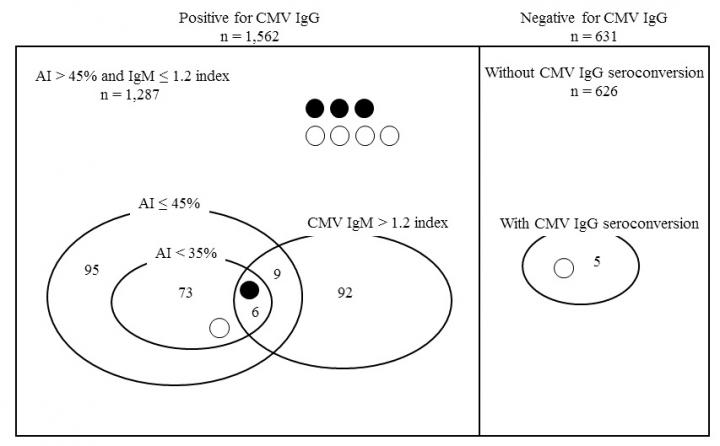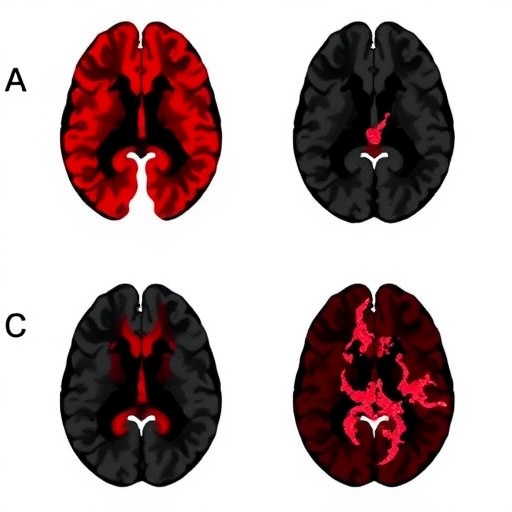
Credit: Kobe University
Human cytomegalovirus (CMV) is a common virus found worldwide. When CMV infects fetuses, it can cause serious complications such as hearing difficulties and mental retardation in affected infants. A group of researchers have evaluated for the first time the efficacy of maternal universal screening using CMV IgG avidity tests for congenital CMV infection, and they have also identified issues with the current maternal CMV screening methods.
The research was carried out by Professor YAMADA Hideto (Department of Obstetrics and Gynecology, Kobe University Graduate School of Medicine), Associate Professor TANIMURA Kenji (Kobe University Hospital Center for Perinatal Care), Project Professor MORIOKA Ichiro (Graduate School of Medicine, Department of Pediatrics) and Doctor MINEMATSU Toshio (Director of the Aisenkai Nichinan Hospital Research Center for Disease Control).
The risk of CMV transmission to the fetus is highest for mothers who were infected by the virus for the first time during pregnancy (primary infection), but the results of this study show that a number of mothers having the infected fetuses were already infected before pregnancy (non-primary infection). Screening methods, which only aim to identify women with primary infection during pregnancy, may be overlooking these cases. These findings were published in Clinical Infectious Diseases on July 20.
Recently, the neurological complications caused by congenital CMV infection in affected infants have been successfully treated with antiviral agents, but early diagnosis of congenital infection is vital for this treatment to be effective. To identify primary CMV infection, maternal blood tests for CMV-specific immunoglobulin (Ig) M antibodies (CMV IgM) are widely used. However, CMV IgM tests can remain positive for years after primary infection, so a positive result for CMV IgM does not always indicate primary infection during pregnancy. A CMV IgG avidity test is also used for identifying a recent infection. This study aimed to determine the effectiveness of CMV IgG avidity tests as a maternal universal screening for congenital CMV infection.
The research group enrolled 2,193 pregnant women. They carried out CMV IgG antibody (CMV IgG) tests before 22 gestational weeks (GW), and if the tests were negative, women were told how to avoid infecting CMV, and tested for CMV IgG again in 34-36 GW. If they tested positive for CMV IgG in the second tests, they were considered to have primary infection during pregnancy.
For women who tested positive for CMV IgG, they carried out CMV IgG avidity tests. When the avidity index was 45% or less, they added CMV IgM tests, and if the avidity index was less than 35% and/or CMV IgM was positive, the women was considered to have primary infection during pregnancy. If their avidity index was over 45%, this was judged as chronic infection (infection before pregnancy). They also measured CMV IgM in the stored serum samples in order to compare the efficacy of maternal screening using avidity tests with that using CMV IgM tests.
Of the 2,193 subjects, 10 infants had congenital CMV infection. A total of 93 women were judged as having primary CMV infection during pregnancy. Among these subjects, 3 gave birth to infants with congenital infection. On the other hand, among the 1,287 people judged as having non-primary infection, there were 7 cases with congenital infection. Screening using avidity testing had the same level of diagnostic accuracy as screening using CMV IgM.
These results show that standard maternal screening methods which pinpoint pregnant women who have primary CMV infection during pregnancy can only predict 3 cases with congenital infection, and the remaining 7 cases were overlooked.
In order to identify all infants with congenital CMV infection upon birth, there are limitations to the current screening methods used for pregnant women. We need to change our strategy, for example using PCR tests that target all newborns by detecting the virus in their urine. Based on these findings, researchers plan to develop a more comprehensive screening method for congenital CMV infection, enabling early detection and treatment of the illness.
###
Media Contact
Eleanor Wyllie
[email protected]
@KobeU_Global
http://www.kobe-u.ac.jp/en/
Original Source
http://www.kobe-u.ac.jp/research_at_kobe_en/NEWS/news/2017_07_21_01.html http://dx.doi.org/10.1093/cid/cix621




